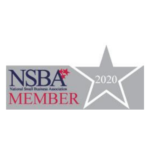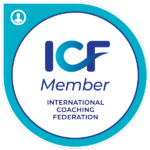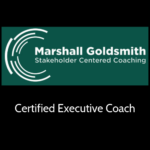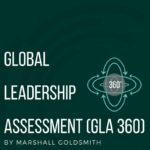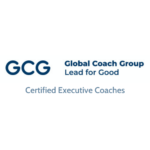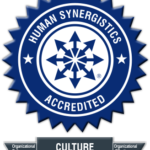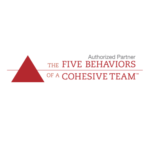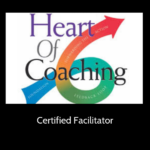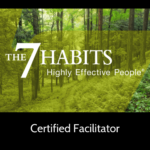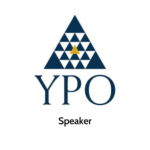Covid-19 has presented a host of challenges and opportunities for leaders to navigate. Leaders provide a compass.
Uncertain times can test and unveil the quality of an organization’s leadership. It is during times of uncertainty and disruption that great leaders act – and act with intention and purpose. Through their thoughts, decisions, and behaviors, leaders set an example for everyone in the organization and stand as the difference between thriving in a crisis or suffering irreparable damage. Turbulent environments often expand the boundaries of competitive advantage. Leaders who are effective in keeping their teams and employees aligned to the mission, vision and values often experience higher levels of employee engagement, profitability and bottom line business results.
10 Insights for Leadership Excellence In Times of Disruption:
COMMUNICATIONS
Silence and resistance are interpreted as unengaged and misinformed. It is essential to communicate and reinforce a clear perspective on what is happening and what it means for the organization.
- Are your leaders communicating often even when they don’t have all the answers?
- Do you leaders demonstrate the poise and composure to reassure all stakeholders that the organization is in safe hands?
LEADER AS COACH
Help others lead. During times of disruption, and organization needs many leaders. The best leaders step up and coach others through the change and transition. They are catalysts for widespread change across leadership teams and boards.
- Is the next generation of leaders stepping up?
- Who is choosing to lead in these uncertain times?
- I the current leadership asking for help across the organization?
- Is the culture of the organization one that allows people to lead withoutauthority?
VISIONARY AND MOTIVATOR
Great leaders have the ability to devote and delegate the appropriate resources to the immediate needs of the organization while maintaining a focus on the vision. These leaders don’t hesitate to make the hard choices to address short- term priorities; they are courageous in preserving the investments that are essential to the sustainability of the organization. Strong leaders are guided by and focus on a clear view of the sacrifices required to preserve strategic direction.
- Are your leaders balancing short-term tactical decision making with the long-term goals of the organization?
- Are your leaders using data, rather than gut feel alone, to make decisions?
- Are your leaders considering short-term and long-term opportunities that turbulent times create, as well as managing the risks?
CORE VALUES
An organization’s mission, culture, and values are put to the test in times of disruption. Great leaders communicate and amplify the mission to reassure and galvanize those around them. They identify leaders who carry the culture and set visible examples by reinforcing the culture and values that will guide the organization through difficult periods. They hold each other accountable and consistently convey through their thoughts, words and deeds the organization’s values that will navigate excellence through short-term challenges.
- Do you leaders know which aspects of your culture will inspire people to overcome difficult situations?
- Can you identify the leaders who will carry the change and transition needed to get positive and lasting results?
- How are your leaders communicating the importance of your organization’s culture and values?
POSITIVE INTENTION AND ASSUMPTIONS
Even when under pressure, great leaders engage purposefully, utilizing communication intelligence, with those around them to maximize the energy of the broader workforce. They create a sense of togetherness and cohesiveness by having the humility to listen to a wide range of opinions and focus on asking the right questions rather than attempting to serve as the sole source of answers.
- Are you leaders emotionally aware enough to listen, as well as tell?
- Does the organization see the leader as authentic?
- Who is responsible for looking after your leaders, and what support mechanisms and development programs are in place?
MAXIMIZE EXCELLENCE
The best leaders actively look outward to employees, suppliers, customers, boards, and investors, gathering insights and fact required to enable better decision making. They understand this is a 2-way communication channel at all levels, and optimize the insights flowing to and from all key stakeholders.
- Do you current leaders have a network of peers inside and outside the organization who can share insights and facts?
- Are you leaders open to new information to help better decision making rather than as a way of gather power?
- Does you organization have a culture of openness that encourages ideas and insights from all levels?
ORGANIZATION
Create order from chaos. Great leaders cut through the clutter of conflicting data and opinions, identifying the areas that need attention and allocating resources to realize excellence. Leaders quickly develop and communicate a point of view on the best path forward, providing a welcome sense of direction to an organization that might otherwise be paralyzed by indecision.
- Do your leaders have the ability to cope with complexity?
- Do you leaders have the flexibility to make quick decisions andcommunicate them clearly?
- Can you leaders manage multiple stakeholders inside and outside the organization proactively?
KNOW WHEN TO PIVOT
Great leaders understand “What Got You Here, Won’t Get You There.” They know the moment when abandoning what has always worked is less risky than sticking with the playbook. This ability to choose the right time to change infuses confidence in the organization and injects the energy needed to drive change.
- Are you leaders disposed to action over analysis and information gathering?
- How do you leaders approach risk?
- Is your organization’s culture open and inclusive enough to move andevolve rapidly?
CONFIDENCE
Great leaders must honestly accept the gravity of the challenging situations. They exude realistic optimism by communicating openly and honestly. They are humble enough to admit they don’t have all the answers. Do so provides them with credibility to share an optimistic, authentic vision that is both reassuring and realistic.
- Do your leaders have the confidence to answer questions honestly even when they don’t have all the answers?
- Are your leaders outwardly optimistic about the organization’s ability to navigate difficult times?
MENTAL TOUGHNESS
Great leaders have grit – the mental toughness, perseverance and focus to approach disruption and challenges. This means delegating necessary tasks, seeing tasks through to completion, maintaining high performance standards, holding people accountable, exuding calm and optimism in the midst of chaos. As a role model of these leadership characteristics, the best leaders lift the collective resilience and tenacity of the entire organization.
- Do your leaders maintain focus and energy even when momentum is lacking in the organization?
- Do you leaders maintain high standards regardless of the pressures the individual and organization are under?
- Do you leaders inspire confidence in themselves and the organization?
Lori Harris and Lynn Whitesell are Managing Partners of Harris Whitesell Consulting – a global leader in assessments, development, coaching, change and transition, culture and engagement, succession planning, and customer strategies. We maximize leadership and team excellence for positive and lasting business results. We help our clients build transformational leaders who meet today’s challenges and trends reshaping the business environment.






